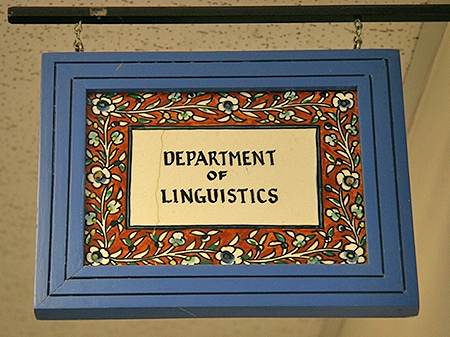
Linguistics ETDs
Publication Date
5-1-2016
Abstract
Paraguay presents a unique case of societal bilingualism in Latin America. Almost 90% of its population speaks the indigenous language Guarani, and half of the population is bilingual in Spanish and Guarani. However, contemporary Guarani has been described as an unpredictable, ad-hoc mix of Guarani and Spanish. This idea is also reflected in the local term jopara 'mixture', which is used to refer to the variety by its speakers. A particularly salient contact feature are loan verbs, i.e. Spanish-origin roots used with Guarani morphology. To gain an empirical perspective on the presence and motivation of Spanish loan verbs in Guarani, 35 sociolinguistic interviews were conducted with Guarani speakers who live or work in Asunción (Paraguay's capital). The initial hypothesis was that, due to a tendency towards bilingualism in urban areas, younger speakers would use Spanish-origin verbs more frequently than older speakers when speaking Guarani. However, an initial count of all verb tokens used by the two oldest and the two youngest speakers (average age: 77 vs. 21; total tokens: 2930) showed only a modest increase in the use of Spanish-origin verbs (an 8% rise). Next, the degree to which some verb meanings have competing Spanish-origin and Guarani-origin forms was quantified to test the hypothesis of ongoing relexification. Of the 331 different verb meanings expressed in these four interviews, very few have broadly equivalent and therefore interchangeable forms. The vast majority of the meanings were expressed categorically, i.e. using only a Guarani or a Spanish-origin form. Two of the attested variable verb meanings ('know' and 'live') were coded in all 35 interviewees and tested for a possible correlation with demographic data and internal factors. It was found that the age of the speaker did not have the hypothesized effect. The amount of tokens of the Spanish-origin form of these verbs did not increase in the younger generation. A re-examination of the initial verb count showed that the difference in preference for Spanish-origin forms between the oldest and the youngest speakers was, instead, found in the low-frequency verbs. Thus, verb meanings like 'live' and 'know', which are mid-frequency, are not undergoing change. This resistance to change is even more evident in high-frequency verbs, which are all categorical Guarani-origin stems, with no attested Spanish-origin counterparts. Overall, these results suggest that to the degree that Spanish-origin verbs are replacing Guarani verbs, only low-frequency verbs are affected. Also, the process is slower than generally assumed. The data analyzed here indicate that the incorporation of Spanish-origin verbs into the language for the most part does not represent a loss of Guarani verbs, but rather serves the purpose of lexical expansion. Finally, the low variability in the expression of verb meanings helps discredit the idea that spoken Guarani is a random, on-the-spot mixture of Guarani and Spanish.
Project Sponsors
Latin American and Iberian Institute (LAII), UNM Office of Graduate Studies (OGS), UNM
Language
English
Keywords
language contact, Paraguayan Guarani, loan verbs, borrowing and frequency
Document Type
Thesis
Degree Name
Linguistics
Level of Degree
Masters
Department Name
Department of Linguistics
First Committee Member (Chair)
Shin, Naomi
Second Committee Member
Vallejos, Rosa
Recommended Citation
Bittar Prieto, Josefina. "A variationist perspective on Spanish-origin verbs in Paraguayan Guarani." (2016). https://digitalrepository.unm.edu/ling_etds/4

Comments
Submitted by Josefina Bittar (jbittar@unm.edu) on 2016-04-18T05:46:58Z No. of bitstreams: 1 Bittar_Thesis.pdf: 949237 bytes, checksum: c58c375c1d2736acfae3caa342fd0a93 (MD5), Approved for entry into archive by Doug Weintraub (dwein@unm.edu) on 2016-06-09T16:39:28Z (GMT) No. of bitstreams: 1 Bittar_Thesis.pdf: 949237 bytes, checksum: c58c375c1d2736acfae3caa342fd0a93 (MD5), Made available in DSpace on 2016-06-09T16:39:28Z (GMT). No. of bitstreams: 1 Bittar_Thesis.pdf: 949237 bytes, checksum: c58c375c1d2736acfae3caa342fd0a93 (MD5)